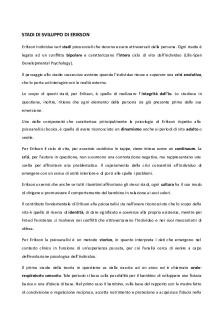Tian Di Ren - Tian Di Ren Lecture Notes PDF

| Title | Tian Di Ren - Tian Di Ren Lecture Notes |
|---|---|
| Course | Contemporary Education |
| Institution | Cagayan State University |
| Pages | 2 |
| File Size | 69.5 KB |
| File Type | |
| Total Downloads | 36 |
| Total Views | 155 |
Summary
Tian Di Ren Lecture Notes...
Description
Tian Di Ren Confucianism sees humankind to have a deep and cosmic significance. This significance manifests itself in partnership with both Heaven and Earth forming the classic Chinese trinity of Heaven Earth and Humankind, together manifesting the true embodiment of nature itself. Tian (Heaven) Tian is the Chinese character for heaven or sky. In a religious context, it was one of the foundational concepts of Confucianism. Some of the ancient philosophers established their religio-philosophical worldviews with the idea of an orderly cosmos where people could lead a meaningful life. Confucius respects Heaven but not in a superstitious manner as his teachings do not focused on issues such as creator-god but on society. Confucius regards tian as “a living culture—crafted, transmitted, and now resident in a human community”. Heavenly principles are rooted in human nature and can be realized in the human world through human practices. The man of virtue was well aware of the power of heaven that it is beyond human control and has mandatory power. Di (Earth) The term “Di” is one of the oldest Chinese words that refer to earth. Its concept is often associated with its complementary aspect, the Tian. In different eras, Di referred to the “earthly emperor” or at times called the ruler as the "Son of Heaven". The so-called earthly king had the most intimate relationship with Tian for it had bestowed upon him the "Heavenly mandate", allowing him to rule, and supported him in this responsible position. The ruler was, on the other side, also obliged to take over this rule with the necessary feeling of responsibility. He had to avoid at all means to make his people suffering by devastation, exploitation and natural disasters. Ren (Man)
Ren occupies a central position in the Confucian philosophy as it represents the highest Confucian virtue. Etymologically, the term “ren” 仁, consist of “person 人” and the number “two 二”, specifying the essence of being human through the relationship of two human beings and the interaction of humans with nature. In Confucianism, ren is the foundation virtue that represents the moral qualities which governs man and his relationship with others that is why it is also called as the perfect virtue. There are various interpretations of Ren and it can be categorized into two: Ren of Affection and Ren of Virtue. The Ren of Affection characterizes man’s feelings of altruism and conscientiousness to others. According to Confucius, “The man of Ren is one who, desiring to develop himself, develops others”. Being able to treat others equally as you would treat yourself is the practice of Ren. On the other hand, the Ren of Virtue symbolizes perfect virtue, moral perfection and human excellence. This can be achieved through the moral cultivation of five (5) virtues namely: Ren, Yi, Li, Zhi, Xin. The combination of Ren of Affection and Ren of Virtue, exhibited in an individual is the ideal form of what human beings should be. Nurture morally upright individuals that are grounded in moral values and exhibit moral actions as their way of life will actually lead to a gracious society....
Similar Free PDFs

6 - Ren Energy Windpower-eng
- 47 Pages

7 - Ren Energy-Photovoltaics eng
- 65 Pages

Lecture 1 - Mathew Di Campos
- 1 Pages

Stadi DI Sviluppo DI Erikson
- 4 Pages
Popular Institutions
- Tinajero National High School - Annex
- Politeknik Caltex Riau
- Yokohama City University
- SGT University
- University of Al-Qadisiyah
- Divine Word College of Vigan
- Techniek College Rotterdam
- Universidade de Santiago
- Universiti Teknologi MARA Cawangan Johor Kampus Pasir Gudang
- Poltekkes Kemenkes Yogyakarta
- Baguio City National High School
- Colegio san marcos
- preparatoria uno
- Centro de Bachillerato Tecnológico Industrial y de Servicios No. 107
- Dalian Maritime University
- Quang Trung Secondary School
- Colegio Tecnológico en Informática
- Corporación Regional de Educación Superior
- Grupo CEDVA
- Dar Al Uloom University
- Centro de Estudios Preuniversitarios de la Universidad Nacional de Ingeniería
- 上智大学
- Aakash International School, Nuna Majara
- San Felipe Neri Catholic School
- Kang Chiao International School - New Taipei City
- Misamis Occidental National High School
- Institución Educativa Escuela Normal Juan Ladrilleros
- Kolehiyo ng Pantukan
- Batanes State College
- Instituto Continental
- Sekolah Menengah Kejuruan Kesehatan Kaltara (Tarakan)
- Colegio de La Inmaculada Concepcion - Cebu











